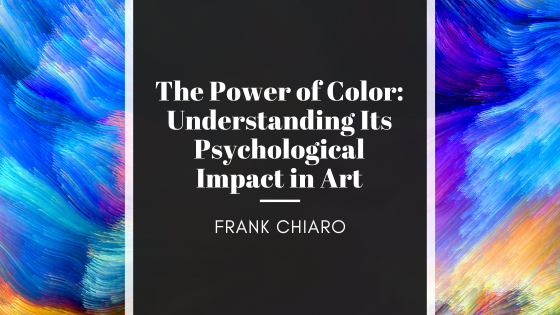Color is more than just an exciting visual experience; it’s a powerful tool that artists have been utilizing for centuries to evoke emotions, convey messages, and captivate audiences. From the vibrant strokes of Van Gogh to the subtle hues of Monet’s water lilies, color plays a central role in helping to shape the psychological impact of art. Understanding the psychological underpinnings of color can deepen our appreciation for artistic expression and enhance our ability to interpret and connect with artworks on a profound level.
At its core, color psychology explores how different colors elicit emotional and behavioral responses in individuals. Red, for instance, is often associated with passion, energy, and intensity. It commands attention and evokes strong emotions, making it a popular choice for artists seeking to convey themes of love, desire, or urgency. Think of the fiery reds in Picasso’s “Guernica,” symbolizing the horrors of war and the suffering of its victims.
In contrast, blue exudes calmness, serenity, and tranquility. It has a soothing effect on the mind and is frequently used to evoke feelings of peace and introspection. Consider the tranquil blues in Hokusai’s “The Great Wave off Kanagawa,” which captures the sublime power of nature and invites viewers to contemplate the vastness of the ocean.
Each color carries its own unique symbolism and cultural associations, further enriching its psychological impact in art. Yellow, for example, is often associated with sunshine, joy, and optimism, while green symbolizes growth, renewal, and harmony with nature. Artists strategically leverage these associations to convey specific themes or narratives within their work, creating layers of meaning that resonate with viewers on a subconscious level.
Moreover, the psychological effects of color extend beyond individual hues to encompass the interplay of color harmonies, contrasts, and saturation levels within a composition. Analogous color schemes, where adjacent colors on the color wheel are used, create a sense of harmony and unity, while complementary color schemes, where opposite colors are paired, generate dynamic contrast and visual tension. Artists adeptly manipulate these color relationships to evoke different moods, highlight focal points, or create visual narratives that guide the viewer’s gaze.
Furthermore, the psychological impact of color can vary depending on cultural, social, and personal contexts. What may evoke feelings of warmth and celebration in one culture could symbolize mourning or sorrow in another. Similarly, individual experiences and associations with certain colors can influence how they are perceived and interpreted. This dynamic interplay between color and perception underscores the complexity and subjectivity of artistic expression, inviting viewers to engage with artworks in a deeply personal and introspective manner.
In the digital age, where art is increasingly consumed and shared online, understanding the psychological impact of color has become even more pertinent. Artists and designers harness the power of color theory to create captivating visuals that resonate with global audiences across diverse cultural and linguistic backgrounds. Whether through striking advertisements, immersive virtual experiences, or interactive multimedia installations, color serves as a universal language that transcends barriers and communicates on an emotional level.
The power of color in art lies not only in its visual allure but also in its profound psychological impact on the human psyche. By understanding the nuances of color psychology, we gain insight into how artists harness color to convey emotion, tell stories, and provoke thought. As we immerse ourselves in the vibrant tapestry of colors that adorn the world of art, let us appreciate the depth and complexity of this timeless medium and the profound ways it enriches our lives.
